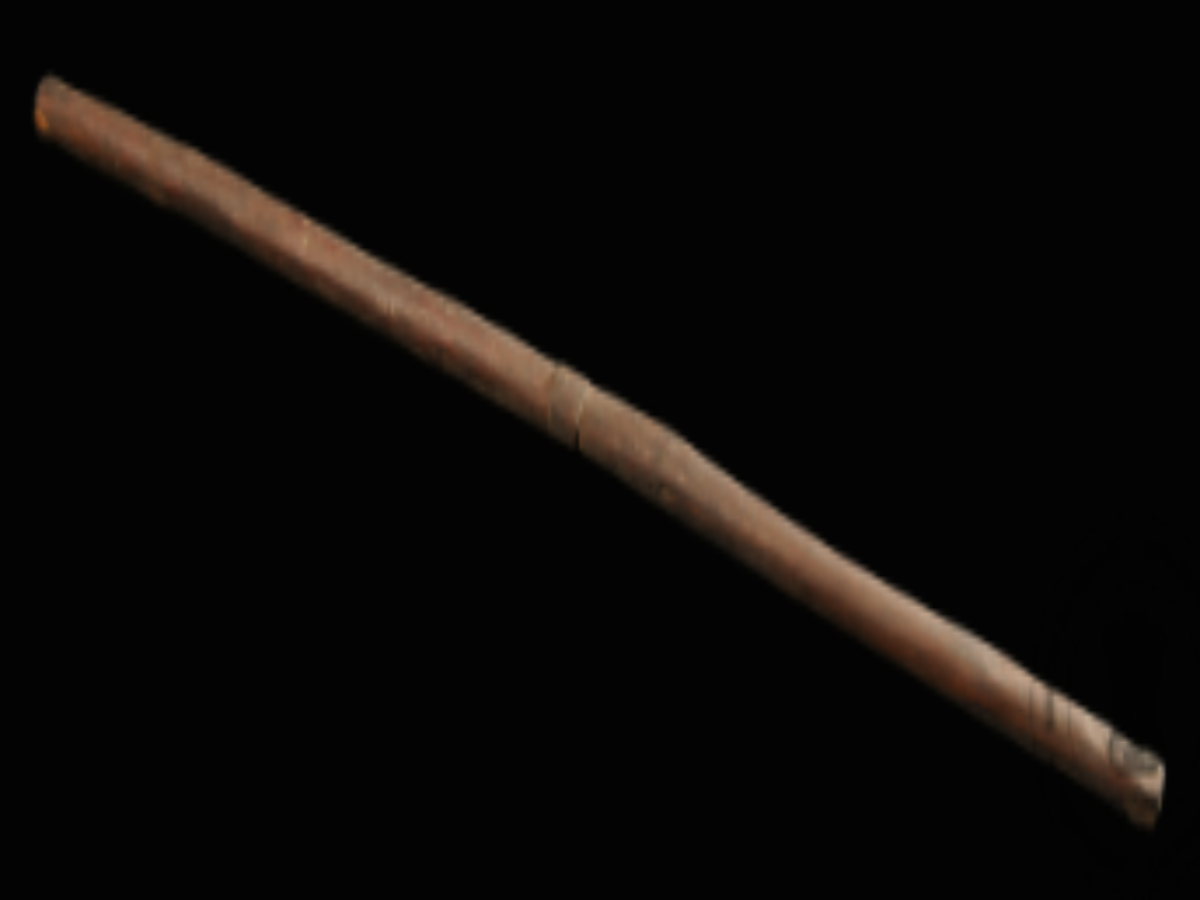State
Tribe Name
Art Type
short description
The traditional weaving that is an essential domestic craft still being practiced by the Khasi tribe of Meghalaya today is that of a matrilineal society which has rich cultural heritage. This particular long cylindrical wooden rod has been identified as one of the several tools that facilitate the indigenous weaving process.This rod is normally made out of locally available woods and is kept very essential for manual backstrap or frame loom systems: tension on the warp threads, aid alignment of threads at the time of weaving, and separate the threads in their action. The simplicity of its design-a straight and smooth cylindrical shape-discloses that the Khasi deep understanding of functional craftsmanship using natural materials.
Thumbnail

Filter Postion
Left
Filter Background
Off
Theme
Filter Header Image

content
Image

description
The traditional weaving that is an essential domestic craft still being practiced by the Khasi tribe of Meghalaya today is that of a matrilineal society which has rich cultural heritage. This particular long cylindrical wooden rod has been identified as one of the several tools that facilitate the indigenous weaving process.This rod is normally made out of locally available woods and is kept very essential for manual backstrap or frame loom systems: tension on the warp threads, aid alignment of threads at the time of weaving, and separate the threads in their action. The simplicity of its design-a straight and smooth cylindrical shape-discloses that the Khasi deep understanding of functional craftsmanship using natural materials.
Weaving among the Khasi people is merely for utilitarian purposes; it is a manifestation of their aesthetic sensibilities and an interesting aspect of their sustainable lifestyle. Traditionally, people weave these textiles for domestic purposes or ceremonial costumes involving the making of certain shawls and wraparounds emblematic of tribal identity.The wooden handmade tools like this rod have made all proof for the eco-friendly practices employed by the tribe: their dependency on biodegradable and renewables. Such weaving implements are found in collections from museums, and even today, they are in use in different parts of rural Meghalaya, signifying survivability of indigenous knowledge systems as well as cultural resistance among Khasi people.
Weaving among the Khasi people is merely for utilitarian purposes; it is a manifestation of their aesthetic sensibilities and an interesting aspect of their sustainable lifestyle. Traditionally, people weave these textiles for domestic purposes or ceremonial costumes involving the making of certain shawls and wraparounds emblematic of tribal identity.The wooden handmade tools like this rod have made all proof for the eco-friendly practices employed by the tribe: their dependency on biodegradable and renewables. Such weaving implements are found in collections from museums, and even today, they are in use in different parts of rural Meghalaya, signifying survivability of indigenous knowledge systems as well as cultural resistance among Khasi people.
Image Mode
landscape
promoted
On
Verified
Off
